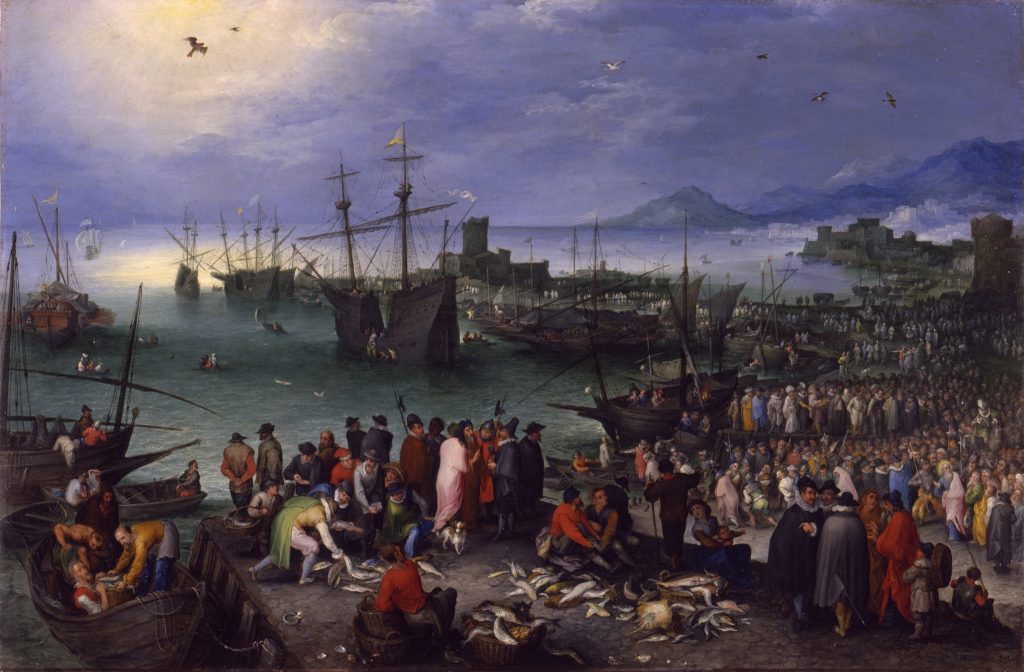Escena del puerto con la salida de San Pablo de Cesarea (obra de arte)
Información sobre la obra de arte
Key Ideas
- This painting is both a landscape and a biblical scene. It was painted on a copper surface.
- The detailed scene depicts St. Paul boarding a ship to Rome after he was arrested in the ancient city of Caesarea. St. Paul blends into the crowd, but he can be identified by the small halo around his head.
- Caesarea has been a harbor city in what is now Israel since antiquity (before the Middle Ages).
- Jan Brueghel the Elder was one of the most prominent Flemish painters of the early 17th century.
Más información
This oil painting on copper depicts an outdoor scene in the ancient harbor city of Caesarea (present-day Israel). The city was founded by Herod the Great in the first century BCE. The scene in this painting is from the Book of Acts, in which St. Paul boards a ship to Rome after being arrested in Caesarea. St. Paul is the figure wearing a halo (near the lower right corner of the painting). He is surrounded by soldiers.
St. Paul was one of Jesus’s apostles, or close followers, though he was not one of the original twelve. He is considered to be one of the key figures in the development and spread of early Christianity. He is known for spreading the teachings of Jesus to non-Jewish people. His writings make up a large part of the New Testament. The fishermen depicted at the bottom left side of the painting represent the other 11 apostles from the Bible. This symbolism comes from a quote in Matthew 4:19, in which Jesus says that the apostles will become “fishers of people.”
Jan Brueghel the Elder was a member of a family of artists (notably his father and his brother). He is known as “the Elder” because his son, also named Jan, became a well-known painter. Brueghel (the Elder) was nicknamed the “Velvet Brueghel” because of his ability to paint fine details. He worked mostly in Antwerp, Belgium, which became a major port city and cultural hub during his lifetime. He sometimes collaborated in paintings with other famous Flemish painters, including Peter Paul Rubens and Hendrik van Balen.
Recursos adicionales
Recursos para los profesores
- Read an article about the life of Jan Brueghel the Elder.
- Read an article about the history of Caesarea.
- Read the biography of St. Paul.
Recursos para los estudiantes
- View a portrait of Jan Brueghel the Elder.
- View a similar painting by this artist.
- Watch a video that explains why artists painted on copper.

